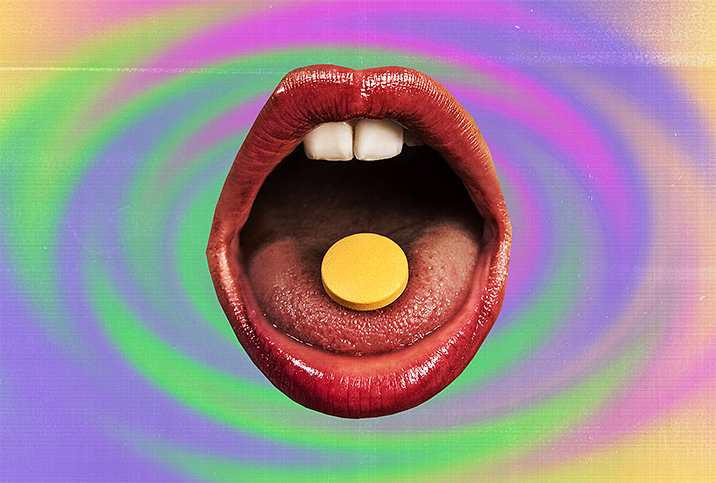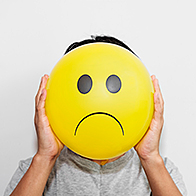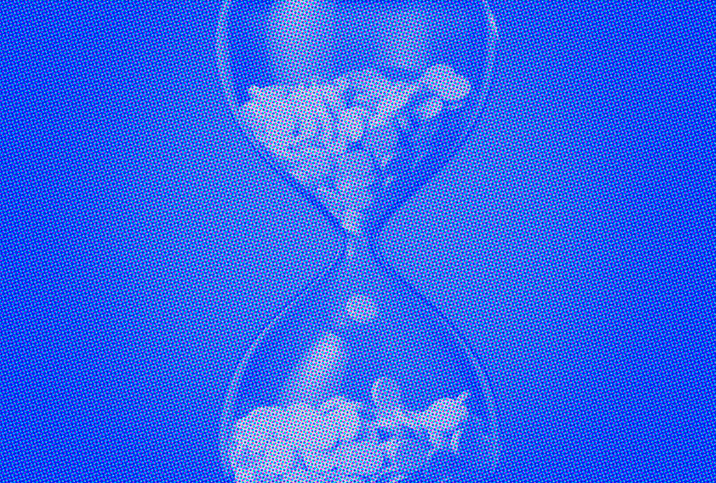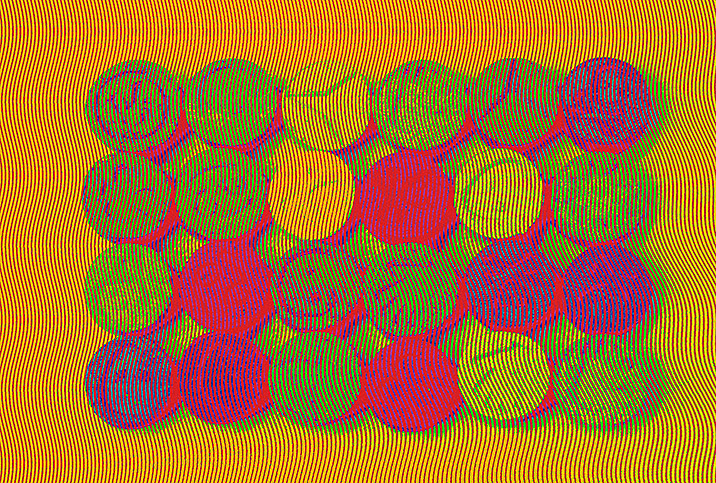Once Shuttered, Psychedelics Return As Psychiatric Treatment

Psychedelics are powerful psychoactive chemicals that produce sensory and psychological changes, resulting in an altered state of perception or consciousness. Long relegated to counterculture dalliances, these drugs are once again coming to the forefront in psychiatric care.
Their role in healing is nothing new. Some, like ayahuasca, mescaline and psilocybin, have been used in ceremonial and medicinal applications for centuries. Ketamine was widely employed as an anesthetic during the Vietnam War; LSD (lysergic acid diethylamide) was administered for alcohol addiction in the 1950s; and MDMA (3,4-Methylenedioxymethamphetamine, also known as ecstasy or molly) has been used as a psychotherapeutic tool since the 1970s.
In the 1970s and 1980s, however, amid the politically charged War on Drugs, most notions of psychedelic therapy were shoved into the shadows. Misinformation and unregulated use followed.
There's no doubt mushrooms and ecstasy, the "hippie flip," are still the cocktail of choice at any given music festival, or that ketamine is an under-the-table appetizer at certain nightclubs. Yet, much like a wild 20-something foraying into their 30s with newfound self-awareness and zest for homemade sourdough and houseplants, psychedelics are entering a different kind of heyday.
Now, several renowned institutions—including Imperial, Johns Hopkins University, the Icahn School of Medicine at Mount Sinai and the University of California, Berkeley—have devoted research centers to studying psychedelic medicines.
Yet, much like a wild 20-something foraying into their 30s with newfound self-awareness and zest for homemade sourdough and houseplants, psychedelics are entering a different kind of heyday.
Studies show psilocybin and other hallucinogens—such as ketamine, LSD, MDMA, DMT (N, N-Dimethyltryptamine), mescaline, ibogaine and ayahuasca—can be safely administered to effectively treat people with severe psychological conditions, including major depression, anxiety, post-traumatic stress disorder (PTSD), obsessive-compulsive disorder and anorexia nervosa, as well as end-of-life anxiety.
One trial, completed at the end of 2020, demonstrated psilocybin—the psychedelic compound that puts the "magic" in "magic mushrooms"—may be better tolerated in treating major depression than the selective serotonin reuptake inhibitor (SSRI) escitalopram (Lexapro).
Along with using MDMA for PTSD and ketamine for treatment-resistant depression, psilocybin use for depression is, thus far, the most well-researched pairing in psychedelics and psychiatry, according to Sherry Walling, Ph.D., a clinical psychologist as well as clinical advisor and podcast host at MINDCURE Health.
"Those are probably the two [MDMA and ketamine] that have the most robust research support," she said.
While Walling and others believe MDMA for PTSD is likely to be the first FDA-approved medicine of its kind, psychedelics' healthcare potential is vast.
"This is an area of exploding research," Walling said. "There's something like 70 new university-based centers that have popped up in the last three to five years that are beginning to explore these connections and how these substances can be used in mental health treatment. And certainly, treatment expands beyond mental health. We're also looking at the relationships between psychedelic substances—particularly something like ibogaine—and neuroplasticity, or the brain's ability to replace or regrow damaged neurons. It has tremendous promise for degenerative neurological conditions and things like traumatic brain injuries."
How do psychedelics work?
Psychedelics stimulate, suppress or correct neurotransmitter activity, explained Aniko Dunn, doctor of psychology at EZCare Clinic.
According to Walling, each type of drug influences neurotransmitter systems differently, though the neurotransmitter serotonin is usually a key player.
Dunn explained that, for example, psilocybin is chemically and systematically akin to serotonin and interacts with similar receptors in the brain and body. MDMA, on the other hand, stimulates the release of serotonin, norepinephrine and dopamine, while ketamine blocks the receptor N-methyl-d-aspartate (NMDA).
"Psychedelics can 'reset' the brain by altering neurotransmitter levels, creating a new perspective on life by causing a person to have a complex experience, or teaching a person a new way of thinking," Dunn said. "Some research also suggests these psychedelics increase the likelihood of a person becoming more open-minded to ideas discussed in therapy."
Walling said psychedelics might also influence the brain's structure, specifically the temporal lobe, where emotion and memory are housed.
Psychedelics can 'reset' the brain by altering neurotransmitter levels, creating a new perspective on life by causing a person to have a complex experience, or teaching a person a new way of thinking.
"Psychedelic scientists often talk about psychedelics as something that disrupts the default mode network. I think about this kind of like the deer trails in the brain that your brain is used to traveling over and over," said Walling. "These are well-trodden pathways in the brain, kind of like the habits that your brain comes into over time. Under a psychedelic state, it's almost like those pathways' strength is diminished, so your brain is less patterned and can reset its typical ways of engaging with consciousness."
This, Walling added, can enhance mental flexibility and allow us to perceive and understand the world and ourselves in different ways.
Psychedelics' effects vary depending on the person, drug type, dosage and administration setting. In small doses, most drugs produce sensory and mood changes, while hallucinations or dreamlike states are common in larger quantities.
"When taken in high doses—either in the form of mushrooms or in combination—psilocybin can indicate a state of profound changes," Walling continued. "These experiences often involve changes in a wide range of senses/perceptions, emotional awareness, visual/auditory contexts, and altered perceptions of identity, individuality and reality."
The same rings true for other psychedelics.
"Many people also report having deeply impactful spiritual experiences on these drugs, and these can have lasting impacts," said Hailey Shafir, M.Ed., LCMHCS, LCAS, CCS.
What does it feel like?
Zurlia Servellon experienced the profound spiritual and psychological impacts of psychedelics firsthand.
She survived more trauma in her childhood than most do in a lifetime. Her father passed when she was 7; she survived sexual assault and a near-fatal dog attack; witnessed natural disasters in her home of El Salvador claim the lives of family and friends; and was bullied in school.
"I never wanted to be a victim, and, instead, I always looked for the lesson in every circumstance, yet I was very depressed," Servellon recalled.
In a quest for understanding, Servellon read voraciously and, at age 24, graduated with a master's degree in industrial and organizational psychology from a U.S. university. While it was easy to guide others, Servellon found it far more challenging to navigate and overcome the labyrinth of her own mind.
"I knew I needed help," Servellon said. "I was tired of living the way I had been living all my life. I had read all the books. I had an awareness of what was happening, but I had zero ideas of how to deal with my issues."
Servellon tried various treatments, including traditional therapy, and was diagnosed with PTSD. Nothing seemed to help, and by age 27, heartbreak shoved her deeper into depression.
'After the MDMA therapy, I stopped being afraid of the unknown and relished in finding new things that made me smile and made me feel alive.'
"I had absolutely no energy to do anything. I was not eating, not sleeping, not socializing, just crying," Servellon said.
Desperate for change, Servellon moved to Mexico, where she attended an ayahuasca ceremony, her first encounter with psychedelics.
"That is when everything changed for me," Servellon said. "Ayahuasca helped me recover and see life from a completely different perception. I was able to see my father, who guided me throughout the entire ceremony. I relived events in my life that had hurt me, but I had suppressed them. I needed to purge all that emotional trauma out of my body to feel my rebirth.
"I understood everything was part of my journey to become who I am now," she continued. "I learned how to feel deeply without being so scared to get hurt by others. I felt pure happiness and genuine love for everything and everyone around me."
For Servellon, the experience—and the subsequent feelings of peace, understanding and empowerment—uprooted her deep-seated depression and prompted her to make positive changes.
"Without it, I believe I would still be depressed and feeling like I want to blame the world for my sad life," Servellon said. "Instead, I am happy, growing and learning every day, and conditioning myself to achieve the potential that I am capable of."
Paul Marlow, who was diagnosed with PTSD after a turbulent breakup and his father's death, had a similarly transformative experience with MDMA-assisted talk therapy.
He said the experience nudged him out of his comfort zone, allowing him to talk more openly with his therapist, gain a different perspective on life and break free from complacency.
"After my MDMA therapy session, I had five to eight months of doing all sorts of things that I would have held back from before, from asking women out on dates to traveling by myself to areas I've never been and starting my own business," Marlow said. "I had always wanted to do these things in the past, yet…I had always talked myself out of it. After the MDMA therapy, I stopped being afraid of the unknown and relished in finding new things that made me smile and made me feel alive."
Servellon felt she had a comparable transformation.
"Letting go of control seemed impossible for me. I was an overthinker and used to create a lot of stress within myself by trying to make everything make sense," Servellon said. "The medicine taught me how to fully surrender to the unseen and trust my intuition as my inner guide and teacher."
Risks and rules
According to Shafir, the only known long-term adverse effect of psychedelic therapy is residual hallucinations, akin to "flashbacks," that can occur months or years after original medication.
While urban legends and scare campaigns are rampant, flashbacks, especially distressing ones, are extremely rare, even in recreational situations. Residual hallucinations are extremely uncommon in general, and even more unlikely when the drug is administered in a clinical setting, which ensures a safe, comfortable and closely monitored environment. In therapeutic administration, doctors are also aware of conditions—such as psychotic or affective disorders or PTSD—that may increase the patient's risk of complications and take appropriate preventive measures.
Even those without these risk factors can be very vulnerable in a psychedelic state, Walling said. Sessions can be unpredictable and, especially for first-timers, may induce anxiety or fear. For these reasons, it's crucial to work with a qualified team and avoid DIY dosing.
"Never try to treat on your own with psychedelics. In clinical settings, people are given a defined, pure dose, monitored during the psychedelic duration and receive professional help from a therapist to consolidate experience," Dunn agreed.
Although Servellon did not take ayahuasca in a clinical setting, she did so in the presence of a qualified shaman, which she says is crucial.
Someone undergoing psychedelic therapy should work with a team, including a medical doctor, a psychiatrist and a therapist, who will provide support before, during and after each session.
"Doing it with people unqualified can be extremely dangerous," she said.
"Not everyone is ready for a deep dive into their inner demons, so to speak. And when they are, it requires a deep level of preparation and support," said Walling. "I've talked with people who've gone through treatments with ibogaine, for example, and they describe it as very painful, scary, distressing, almost as if they're facing every demon in their brain and in their history all at one time. It's a long, stressful, arduous process."
Ideally, Walling said, someone undergoing psychedelic therapy should work with a team, including a medical doctor, a psychiatrist and a therapist, who will provide support before, during and after each session.
"These medicines are very powerful, which means our experiences with them are very intense," Walling said. "We kind of need all our resources around us."
Walling also noted it's essential to acknowledge some substances are being used in ways that deviate far from their original, often sacred, contexts. Even besides the issue of cultural appropriation, misusing them in such a way may diminish the substances' effectiveness.
"It's up to practitioners to think about how to use them with reverence and with a nod to their origins that honors some of the spiritual-based mechanisms that may be partially responsible for how these medicines work," Walling added.
More to learn
Of course, on top of all the medical caveats, there's that pesky legal caveat: The drugs are still illegal throughout most of North America. Several U.S. states and cities are in the process of legalizing or decriminalizing certain psychedelics, including psilocybin, for therapeutic and/or recreational use. Oregon became the first state to complete the process in 2020.
Even proponents of the therapeutic use of psychedelics will tell you there's still much to learn, and these treatments, like any, are not for everyone. However, the potential is evident.
"I used to be the biggest skeptic, and I only tried it because I was desperate. I felt as if I had no other option," Servellon said. "I only went to a ceremony after reading the scientific research and understanding how it affects the brain. But once I attended, I don't think anything can explain the level of peace and love you can experience. You simply just feel transformed, and your life is turned upside down for the better."
"The more we destigmatize these substances and help people access them safely, the more we'll be able to reap the benefits," Walling said. "This is no longer fringe science."




















